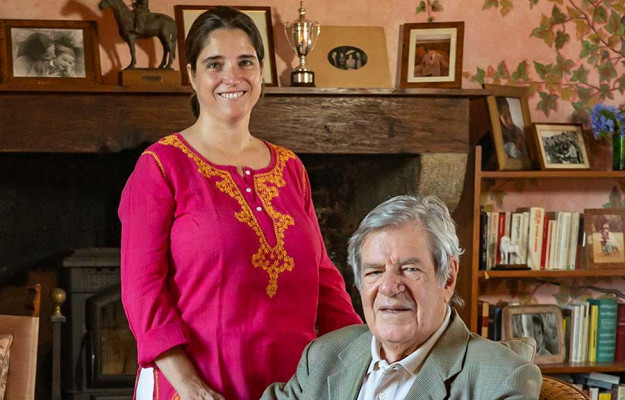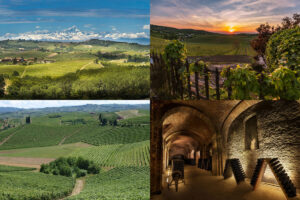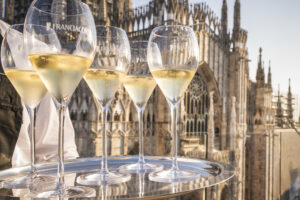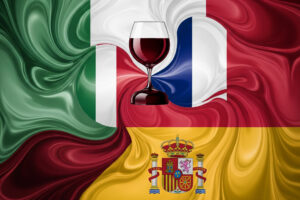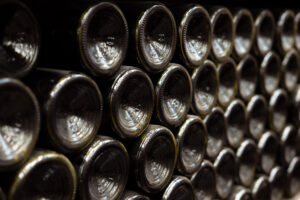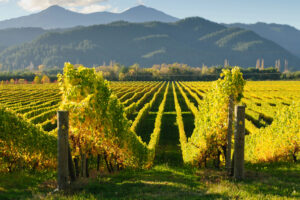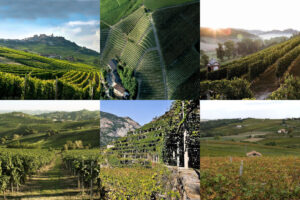Profitability is the absolute number one most important parameter for a company. Even in wine. And, the best Italian wine producing companies for profitability, are, in order: the San Guido Estate of the Incisa della Rocchetta family, “cradle” of the legendary Sassicaia, whose ratio between EBITDA and turnover is 56.8%, ahead of Marchesi Antinori, led by the Antinori family, at 43.3% (but that has a definitely larger turnover of 36.5 million euros vs. 213.6 million, ed.), and Cantine Pellegrino, the historic winery in Marsala, at 39.2%. Completing the “top 11” wine companies (excluding cooperatives) that have a ratio higher than 22.5%, the Sicilian company Cusumano (37.03%), the Tuscan Marchesi Frescobaldi (33.4%), the Santa Margherita Group (29.8%), Donnafugata, also in Sicily (27.4%), and instead Castellani is also from Tuscany (24.5%), then the Cotarella Family in Umbria (23.2%), Guido Berlucchi in Franciacorta (22.8%) and, again on the Sicilian wine continent, Planeta (22.7%). This is the journalist Anna di Martino’s (www.annadimartino.it), traditional analysis of Italian wine published today in “CorrierEconomia”, the economic weekly insert in the daily “Corriere della Sera”, taking into consideration the 2018 budgets of the largest and most important Italian wine companies. One hundred and five wineries have a turnover of more than 10 million euros that together generate a turnover of 6.6 billion euros (+ 6.3% compared to 2017), of which 3.8 billion euros are exports, and count 12.340 employees in their ranks.
The giant Cantine Riunite & CIV has been confirmed the number one position for turnover, at 615.3 million euros, up 3.5% compared to 2017 (of which 388 million euros of the Gruppo Italiano Vini), at quite a distance from the second position held by the Caviro Group at 235 million euros (+6.8%) and Fratelli Martini at 213 million (+7.4%). These are the top of a small, but growing, “club” of wine companies that invoice over 100 million euros, which 21 wineries made this year, including two “new entries” on the 2018 edition of the ranking. At position number four there is Marchesi Antinori at a turnover of 213.6 million euros (+7.43%), Zonin1821 at 202 million (+ 0.5%), Casa Vincula Butter Carlo at 195 million (+ 8.9%), Cavity at 190.5 million (+4.3%), the Mezzacorona Group at188.2 million (+1.8%), Enoitalia at181.8 million (+ 7.6%), and the Santa Margherita Group at 177.4 (+ 5.1%) completes the “top 10”. Then we have Cantina di Soave (141 million euros), La Marca Vini and Spumanti (140.2), Terre Cevico (131.2), Marchesi Frescobaldi (119, 5), Collis Veneto (119), Ruffino (110.1), Mondodelvino (108.5) and Schenk Italia (102.8). The two new entries are Vi.Vo. Cantine (101.9 million euros), and the Lunelli Group, owner of the leading Trentodoc company, Ferrari, and of the Prosecco brand, Bisol, at 101.1 million euros in turnover 2018.
There are, instead, 19 wineries that have a turnover between 50 and 99 million euros, which are, in order: Contri Spumanti, Villa Sandi, Mionetto, Vignaioli Veneto Friulani, Farnese Group, Banfi, La Vis, Viticoltori Ponte Masi, Piccini, Valdo, Terra Moretti, Bottega, Settesoli, Easter Vineyards and Cellars, Sartori, Astoria Vini, Caldirola and Castellani.
One of the most important categories in the study is definitely hectares of property, and vineyards, especially in the most prestigious and most successful wine areas, have reached mind-boggling prices, becoming a pioneer asset. The number one company, not considering cooperatives, at a very great distance is Marchesi Antinori, counting 2.834 hectares of property, almost 1.000 more than Zonin1821 in second place at 1. 990, and Marchesi Frescobaldi in third at 1.370, ahead of Banfi (1.050 hectares), Genagricola, the agricultural holding company of the Generali Insurance Group (900 hectares), the Terra Moretti Group at (870), Cusumano (525), Santa Margherita Group (516), Bertani Domains (460), Feudi di San Gregorio (427) and Tasca d’Almerita (413).
Properties counting 300 to 400 hectares of vineyards, instead, include Planeta (380 hectares), Cecchi (370, growing rapidly from 298 hectares in 2017), and Masi Agricola at 329, while there are 11 wineries, revealed the study, that have properties of over 200 hectares; namely, Fratelli Martini, Tenute Piccini, Castellani, Argiolas, Mastroberardino, Barone Ricasoli, San Felice, Donnafugata, Umani Ronchi, Gruppo Lunelli and Allegrini.
As far as exports are concerned in an increasingly central and borderless world market, the 10 wineries showing the largest turnover share achieved abroad are: Adria Vini (98.5%), Cantine Sgarzi Luigi (98.01%), Botter (95.3%), Farnese (94.8%), Ruffino (92.9%), Castellani and Fratelli Martini (90%), Pasqua Vigneti e Cantine (89.5%), Cantine Volpi (89.2%) and Carpineto (88.2%).
When we look at the number of bottles sold, instead, the two cooperatives that lead the ranking in turnover are reversed (number 1 Caviro, at 244.2 million bottles, and number 2 Cantine Riunite and CIV at 217.8, of which 85.6 million from the Gruppo Italiano Vini). Enoitalia is number 1 in the individual companies category at an outstanding 97.5 million bottles, ahead of Botter at 88.5, Contri Spumanti at 71.3, Mondodelvino at 62.2, Italian Wine Brands at 60, and again Zonin1821 at 51 million, Schenk Italia at 49.9, Cielo e Terra at 31.7, Casa Vinicola Caldirola at 28.9, and Ruffino at 27.7million bottles.
Beyond just the cold numbers, the study narrates long-term trends, as well as innovations taking place in the Italian wine world. For instance, looking at the turnover of the 105 wineries evaluated, these companies’ exports are worth 62.6% of the Italian total (+1% compared to the 2017 balance sheets), while on the domestic market it is much lower, as the sample brings together 34.3% of the “national” wine business. Further, in 2018, the overall growth on the domestic market (+ 8.6%) for these wine companies was almost double that of exports (+4.6%). This is perhaps a sign of recovery in wine consumption in Italy, but it is certainly a greater awareness of the importance of the national market, which remains number one for Italian wine, and in the last 2-3 years has seen the top players in the sector return to investing with much more confidence.
However, there is still a difference in “weight” between private and cooperative companies: 62 the first in the rankings, 43 the second. Cooperatives account for 43.8% of the total turnover, and are worth over half of the domestic market (54.19%), but much less in exports (36.2%). Foreign markets are historically the confirmed land of conquest, the prerogative of Italian wine entrepreneurs, even though for years even the most important and dynamic cooperative Italian wine groups have successfully taken the road of exports.
“Year by year we have seen that there is great energy and dynamism in the cooperative”, Anna Di Martino told WineNews, “which is a sector that seemed to be the most backward, and instead it is very dynamic, thanks to the leadership of the cooperative world, such as Ruenza Santandrea (head of the Confcooperative wine sector, ed.), who has given targeted and well-taken incentives.
There have also been many changes in the private sector, such as the process of strengthening some groups, especially the larger ones that are creating increasingly interesting focal points, like Santa Margherita, which is investing more and more in vineyards though not losing in profitability. And, this is not that easy, because when you spend a lot your profitability may also suffer. Or else, companies like Antinori that has continued to invest in vineyards and whose goal is total productive autonomy. There is also great attention towards all the family-run groups, from north to south, where we often see young people getting into the companies that want to innovate and grow. The best results are when the young people can work with an older, but open-minded generation that is willing to let go of the reins of the company”.
Another thing to note, pointed out Anna di Martino, “is growth on the Italian market, which for years has been at a stalemate. The domestic market is undoubtedly very difficult, where above all, those who work with large-scale retailers must deal with many references and with the power of large buying groups; however, despite this, there are many companies that have done very well on the Italian market, like for instance, the sensational increases of the Farnese Group, Rauscedo, Piccini, La Vis or Cantina di Soave, all above 17%. Further, what is really important is that the companies are continuing to invest; Ruffino, Frescobaldi, Santa Margherita, Cantina di Soave, Antinori and Cantina di Bolzano, to name just a few (overall the 105 companies in the rankings reached 450 million euros in investments in 2018, + 6% compared to 2017, ed.), meaning that even the most consolidated companies are looking to the future and are not just resting on their laurels”.
Although the regions that most contribute to the turnover of Italian wine are Veneto, Emilia Romagna, Tuscany, Piedmont and Trentino, the performance of the top wineries in Sicily really stand out. “One example of this is Donnafugata, the company that has seen its EBITDA grow more than ever before, from 22% to 27.5%”.
Possibly the most positive aspect of all is the dynamism of all types of companies, from cooperatives to private individual ones, to “the most industrial and commercial groups, such as Mondodelvino, which is, for example, investing also in vineyards and in wine tourism. And of course, it is obvious that whoever has the arrow of sparkling wine in his bow has an edge and is a step ahead of the others”. Generally speaking then, Italian wine, at least its big names, shows an enviable state of health.
Copyright © 2000/2025
Contatti: info@winenews.it
Seguici anche su Twitter: @WineNewsIt
Seguici anche su Facebook: @winenewsit
Questo articolo è tratto dall'archivio di WineNews - Tutti i diritti riservati - Copyright © 2000/2025










